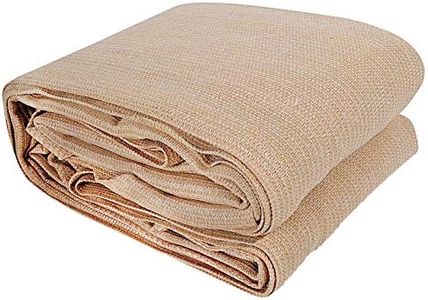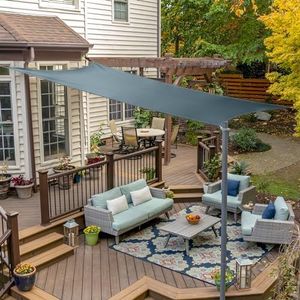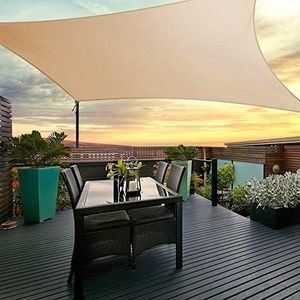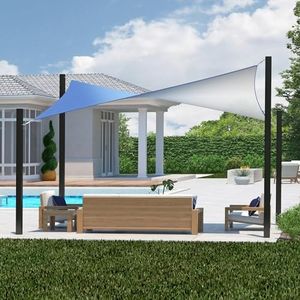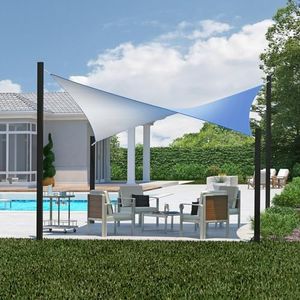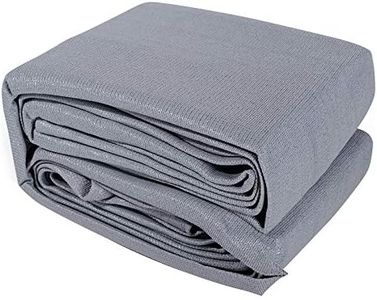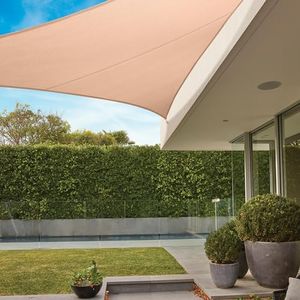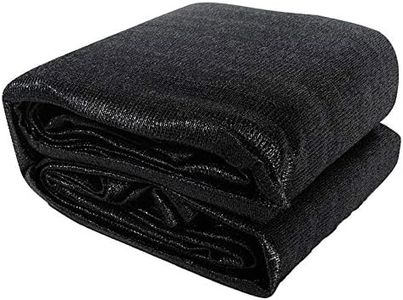We Use CookiesWe use cookies to enhance the security, performance,
functionality and for analytical and promotional activities. By continuing to browse this site you
are agreeing to our privacy policy
10 Best Shade Sails
From leading brands and best sellers available on the web.Buying Guide for the Best Shade Sails
Choosing the right shade sail can transform your outdoor space by providing comfort, style, and protection from the sun. Before making a decision, think about where you want to place it, how much area you want to cover, and how much sun or rain protection you need. It's important to match the sail to your specific needs, ensuring both practicality and visual appeal. Doing some planning around installation points and measuring your area accurately will help you make the best choice.MaterialThe material of a shade sail is crucial as it affects durability, UV protection, and resistance to weather. Common options are high-density polyethylene (HDPE) and polyester. HDPE is popular for excellent UV protection and breathability, making it ideal for hot climates, while polyester often offers more water resistance and a smoother finish. To choose, consider if you need more sun protection (HDPE) or if you want a bit of rain resistance (polyester). If your primary need is cooling shade, focus on high UV-blocking, breathable fabrics; if you want to stay dry under the sail, look for materials that are labeled as waterproof or water-resistant.
UV ProtectionUV protection refers to how much of the sun's harmful ultraviolet rays are blocked by the sail. This is important for protecting your skin and keeping the area underneath cool. UV protection ratings can be as low as 70% or as high as 98%. If you plan to spend long hours under the sail or have children playing, aim for protection closer to 95-98%. For occasional shading or partial cover, a lower percentage might suffice.
Shape and SizeShade sails come in shapes like triangles, rectangles, and squares, each creating different coverage and looks. Shape affects the amount of shade and the design style; triangular sails are best for smaller areas or creative overlapping, while rectangular and square sails cover larger spaces well. Sizes vary greatly, so it's essential to measure your area and consider how much space you want shaded. For smaller patios or balconies, go for more compact sails; for gardens or wide terraces, opt for larger models, or combine several sails for flexible coverage.
Attachment Points and InstallationAttachment points are where and how you fix your shade sail. This is important because proper tension and anchoring ensure safety and prevent sagging. Placement should match available strong structures like walls, posts, or beams. Sails come with different attachment hardware options and recommended angles. If you want an easy installation, look for sails with adjustable kits and clear instructions. Always check the distances between anchors, and if needed, plan to add sturdy posts. Picking the right setup will ensure your sail is both secure and effective.
Water Resistance/BreathabilityThis feature refers to how well the sail allows water and air to pass through. Some sails are designed to be water-resistant or waterproof, offering protection from light to moderate rain, while others are breathable and only block the sun, allowing hot air to escape. Breathable sails are great for hot, dry climates since they reduce heat buildup, whereas waterproof sails are better if you expect rainy weather. Think about your local climate and main usage — for pure sun relief, breathable is best; for rain shelter, go for water-resistant.
Edge Design and ReinforcementThe edges and corners of a shade sail are important for strength and durability. Well-reinforced edges prevent stretching or tearing over time, especially in windy areas. Sails might have extra stitching, webbing, or steel cable inserts in the edges. If you're in a place with gusty conditions or plan to leave the sail up for long periods, choose one with reinforced edges and strong corners to ensure it lasts.
